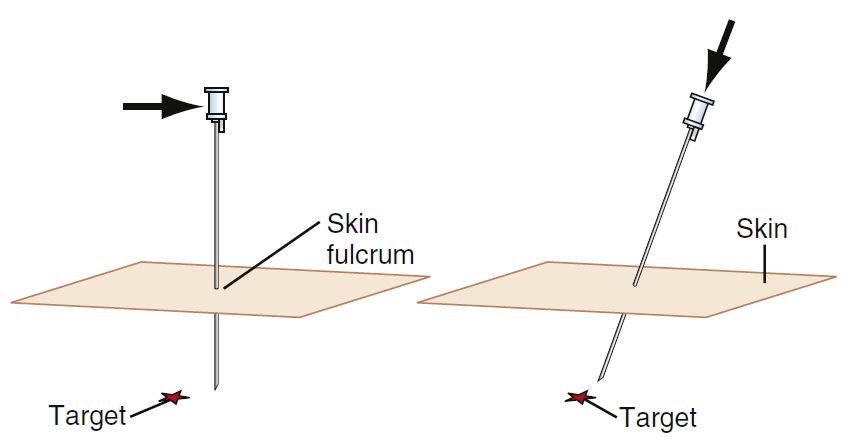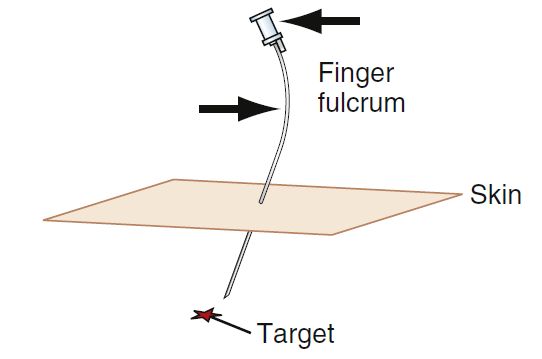SPINE INJECTION-NEEDLE CONTROL
SUMMARY
1. Leverage: used for thicker needles. Leverage a thicker needle, using the skin as a fulcrum.

2. Bevel control: understanding and using the needle’s property of movement away from the bevel is known as bevel control. Because of the angulation of the bevel in a Quincke needle, the needle moves in the direction of the sharper, pointed needle tip, which is away from the bevel.

(The notch, at the proximal end of the needle, denotes the side on which the bevel is placed)
3. Concavity (finger fulcrum): used for thinner, higher gauge needles. When exaggerated movements are needed, concavity can be used to sharply change directions without retracting the needle, especially when thinner needles are used.

Images: Furman, Michael B., and Leland Berkwits. Atlas of Image-Guided Spinal Procedures. Elsevier, Inc, 2017.
Reference(s)
Furman, Michael B., and Leland Berkwits. Atlas of Image-Guided Spinal Procedures. Elsevier, Inc, 2017.
Horowitz AL. MRI Physics for Physicians. Springer Science & Business Media. (1989) ISBN:1468403338.
Mangrum W, Christianson K, Duncan S et-al. Duke Review of MRI Principles. Mosby. (2012) ISBN:1455700843.